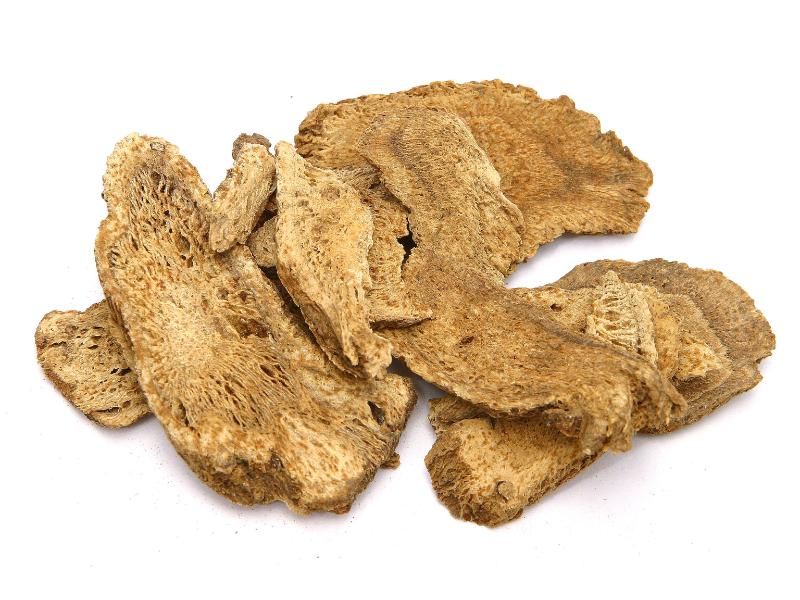Search in medicinals
Aucklandiae Radix
Costusroot
木香 〔木香〕 mù xiāng

Alternate Chinese names: 广木香 guǎng mù xiang
Kingdom: Plant
Origin in PRC Pharmacopoeia: Aucklandia lappa Decne. [= Saussurea lappa Clarke]. (PRC Pharmacopoeia)
Origin in unofficial sources: Saussurea lappa Clarke [= Aucklandia lappa Decne.]; Vladimiria denticulata Ling; Vladimiria souliei (Franch.) Ling; Vladimiria muliensis (Hand.-Mazz.) Ling; Aucklandia lappa Decne.*
Use: Medicinal
Category: Qì-rectifying agents
Properties: Acrid, bitter; warm.
Channel entry: Spleen, stomach, large intestine, gallbladder, and triple burner channels.
Actions and indications:
- Moves qì, regulates the center, and relieves pain: Spleen-stomach qì stagnation; diarrhea or dysentery with tenesmus; pain in the abdomen or rib-sides; jaundice.
- Additional uses: Mù xiāng is used with supplementing medicinals to help absorb them and prevent their slimy (cloying) nature from causing stagnation. It is also fortifies the spleen and disperses food.
- Modern applications: Mù xiāng has recently been used to treat gallstones and gallbladder colic.
Dosage and method: Oral: 3–10g in decoctions. The unprocessed form is stronger for moving qì; roasted mù xiāng is more moderate and is often used to check diarrhea.
Warnings: Mù xiāng is acrid and warm, as well as aromatic and dry; it should thus be used with care in yīn vacuity with effulgent fire. Mù xiāng is a CITES listed endangered species, so the wild form is controlled for trade. However, it is widely cultivated for clinical use, and the cultivated product is not restricted for trade.
Notes: What is called mù xiāng in Chinese originally came from India and Burma (Myanmar). Hence, it is also called guǎng mù xiāng. In the 1930s, it was introduced into the Yúnnán and so products hailing from this region are called yún mù xiāng. Production has since spread to other regions. However, not all items labeled as mù xiāng in Chinese are Aucklandia lappa. Chuān mù xiāng, literally Sichuān mù xiāng,
is identified botanically as being Vladimiria souliei. Qīng mù xiāng, literally green mù xiāng,
is identified as Aristolochia debilis. Yuè jùn mù xiāng, literally deep Yuè-nán mù xiāng,
is identified as Vladimiria denticulata and related species.
Product description: This is a spindle-shaped or cylindrical root, with irregular contours, usually 6–20 cm long, and 1.5–6 cm thick. The exterior surface is brown, and if split longitudinally as is often the case, the whitish-yellow to dark-brown wood can be seen. This root is heavy and hard and does not break easily. On the transverse section, the skin is thin, and the larger woody area appears yellow or white, with dark brown annular markings and radial medullary rays. It has a strong aroma. The decocting pieces are transverse slices 1–2 mm thick.
Quality: The best quality is dry and hard and gives off a strong odor.
Production area: Costus root (Aucklandia lappa): Yúnnán, Guǎngxī, Sìchuān, India, Burma.
Etymology: 木香 (mù xiāng) literally means wood aroma
or aromatic wood.
See: Chuān mù xiāng (川木香 Vladimiriae Radix, common vladimiria);